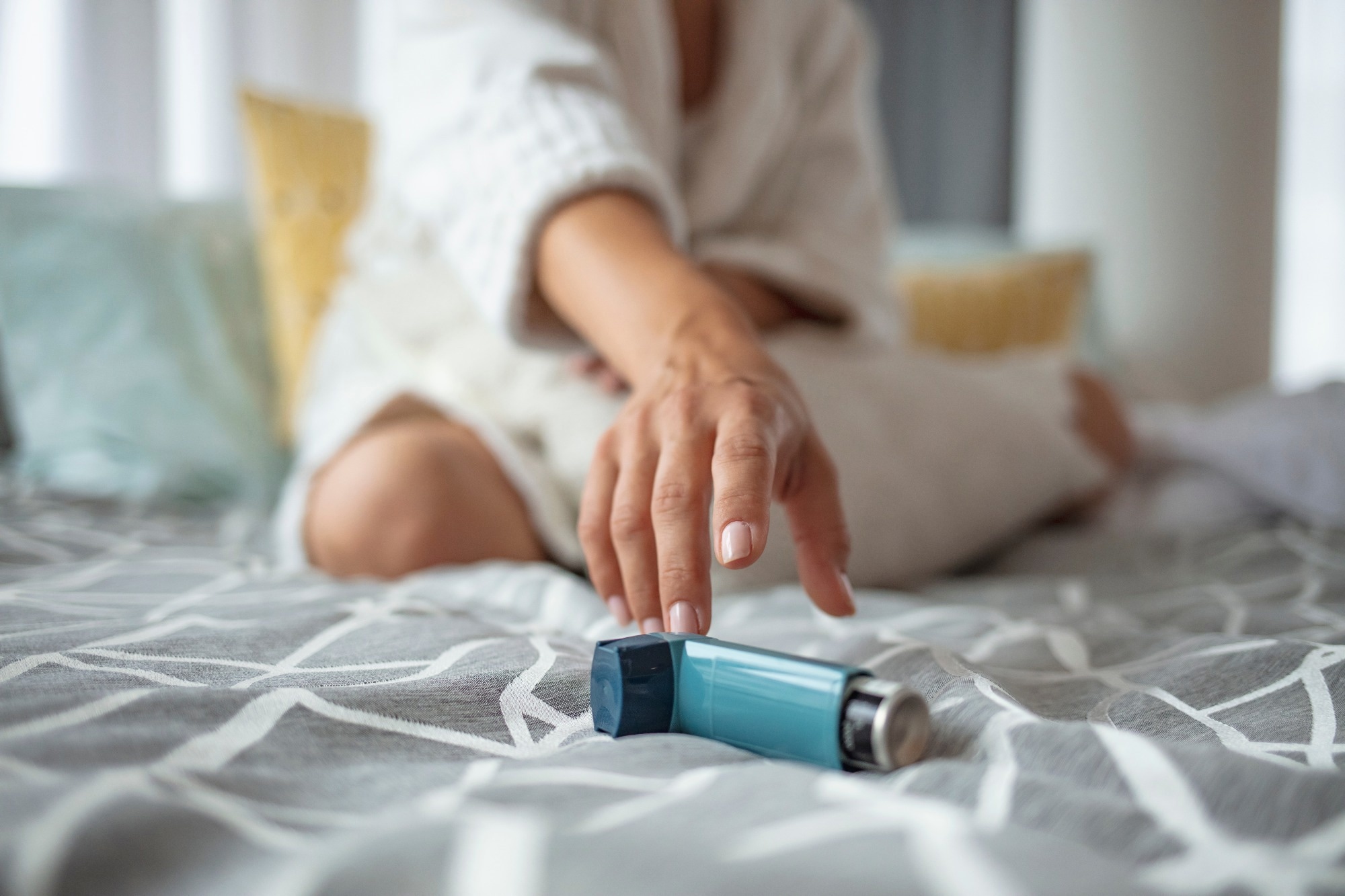 By Neha MathurReviewed by Danielle Ellis, B.Sc.Apr 20 2023
By Neha MathurReviewed by Danielle Ellis, B.Sc.Apr 20 2023In a recent study published in the Annals of Internal Medicine, researchers performed a randomized, placebo-controlled trial (RCT) among adults with confirmed severe acute respiratory syndrome coronavirus 2 (SARS-CoV-2) infection with at least one risk factor that facilitated the development of severe disease to assess the effect of treatment with fluvoxamine and inhaled budesonide combined vs. placebo.
 Study: Oral Fluvoxamine With Inhaled Budesonide for Treatment of Early-Onset COVID-19. Image Credit: Dragana Gordic / Shutterstock
Study: Oral Fluvoxamine With Inhaled Budesonide for Treatment of Early-Onset COVID-19. Image Credit: Dragana Gordic / Shutterstock
Background
Multiple phase II and III trials demonstrated that fluvoxamine, a selective serotonin reuptake inhibitor, and inhaled budesonide, a corticosteroid, have favorable safety profiles, use anti-inflammatory effects for treatment, and prevent the progression to severe disease in coronavirus disease 2019 (COVID-19) outpatients.
All these trials have demonstrated the clinical benefits of these two medications alone but not in combination. Combining interventions with proven benefits might improve the effectiveness of individual drugs. It is significant because there is a critical need for accessible and effective treatment of early SARS-CoV-2 infection. COVID-19 outpatients for whom oral protease inhibitors or monoclonal antibodies are inaccessible need these treatments the most.
About the study
The present study used a randomized adaptive platform trial to evaluate the potential additive benefits of combining oral fluvoxamine and inhaled budesonide regimens. The trial design used a master protocol that sets decision-making criteria regarding discontinuing treatment interventions because of futility or adding new ones.
First, they randomly assigned COVID-19 outpatients to fluvoxamine plus inhaled budesonide treatment group or matching concurrent placebos using a block randomization procedure for each of the 12 participating sites in Brazil, stratifying participating patients by age into <50 and ≥50 years age bands. Notably, the study population was ~95% vaccinated and well-balanced concerning age, comorbidities, and body mass index. Also, the RCT team, site staff members, and all patients remained blinded to treatment allocation.
The RCT team administered 100 mg twice daily and 800 mcg twice daily dosages of fluvoxamine and inhaled budesonide for 10 days. They recorded the primary outcome for 28 days post-randomization using a Bayesian framework for analysis. It was a combination of COVID-19-related hospitalization, retention in an emergency department for physician observation for ≥six hours, and other complications related to disease severity.
They also monitored several secondary outcomes, such as adverse drug reactions, mortality, and patient-reported problems, to name a few. The researchers used a frequentist approach for secondary outcomes analyses. Finally, they used Cox proportional hazards models for assessing time-to-event outcomes.
Results
There were 738 participants in both oral fluvoxamine plus inhaled budesonide and placebo groups. The highly vaccinated cohort receiving oral fluvoxamine and inhaled budesonide showed a marked reduction in the composite primary endpoint of hospitalization or retention in an ED for ≥six hours, illustrating the protective effects of combined drug treatment in early COVID-19. Inhaled budesonide exerted its effects via interaction at the lung epithelium or as a result of the drug bioavailability, depending on the primed immunity status of the recipient.
The study approach helped identify people under observation in an ED setting for ≥six hours with more severe symptoms. In Brazil, retention of COVID-19 patients in specialized ED settings was as important as hospitalization when outpatient numbers peaked during the pandemic waves. Patients in these settings represented those who experienced clinical worsening of COVID-19 but remained nonhospitalized due to hospital capacity issues.
Another distinguishing feature of this outpatient RCT was that it involved direct patient contact and subsequent follow-ups via telecommunications by medical staff, nurses, and clinicians.
The absolute number of serious adverse events in the combination drug therapy group was lower than in the placebo group. This finding has implications for the clinical management of COVID-19 outpatients globally. Since these oral drugs are unavailable in low- and middle-income countries, repurposed drugs might be an alternative option for healthcare providers. However, even in the United States of America and high-income countries, these drugs remain reserved for elderly populations at a higher risk of progression to COVID-19.
Conclusions
To conclude, simultaneous use of the combination of oral fluvoxamine and inhaled budesonide decreased the rate of progression to severe COVID-19 and the subsequent need for advanced medical care in this high-risk population. Furthermore, given its favorable safety & tolerability profile, low cost, accessibility, and availability, clinicians worldwide could consider treating COVID-19 outpatients at high risk for severe disease with this drug combination.